GrabCAD

Belt Squat Attachment for Power Rack
by GrabCAD
Last crawled date: 1 year, 11 months ago
We have been a long time admirer of the Belt Squat and Belt Squat attachment due to its efficacy in developing the leg muscles without placing un-necessary stress on the assisting muscles meaning no dreaded lower back pumps and a potential increase in training volume. The Belt squat is also a must have when it comes to rehabilitation and training around current injuries or niggles that may be present.
The Lift & Press Belt Squat collection is growing by the Day! The belt squat attachments for power racks now come in two models both of which are fully manufactured by Lift & Press at our HQ in Manchester from locally 60mmx60mmx3mm sourced steel box section.
The Level Belt Squat attachment is simple and easy to use and is the perfect attachment to any squat rack. The Lever bel squat utilises a hitch pin to enable the 60mmx60mmx3mm to easily pivot in an up and down motion with a 50mm loading pin welded onto the the construction so you can easily load weight plates.
The J-cup Lever Belt Squat utilises the exact same heavy duty arm but is instead fixed to a j-cup so that it can be easily set up and adjusted allowing it to be positioned in much more angles for a number of exercises from belt squat to single arm back rows!
The goal of any good training program should be to progressively overload particular aspects or training variables from speed and power to something as simple as the size and volume of the quadriceps. If any athlete is to obtain that goal then they need to ensure they minimise any elements which may impede the maximum muscle development or the amount and frequency they are able to train!
The Belt Squat thus should be a staple in every well thought out training plan from the next cyclists stars to future Mr. Olympias! This is due to its ability to effectively train and recruit the needed muscle fibres within the leg muscles whilst protecting the lower back and core muscles from taking all of the strain.
The gluteus maximus is the largest muscle within the body, hence, logic would say it therefore should be able to handle the highest load in regards to weight. However, the gluteus maximus is hardly ever trained to failure as in order to do so you have to also engage many other much weaker muscles within the core which play a key role in stabilising the body when performing the traditional squat movement.
This is what led the best Strength and conditioning coaches to develop and utilise the belt squat as it isolates the muscles within the leg when performing a squat allowing for a much higher load to be lifted and a far superior stress stimuli response in respects to motor recruitment and muscle development.
The Lift & Press Belt Squat collection is growing by the Day! The belt squat attachments for power racks now come in two models both of which are fully manufactured by Lift & Press at our HQ in Manchester from locally 60mmx60mmx3mm sourced steel box section.
The Level Belt Squat attachment is simple and easy to use and is the perfect attachment to any squat rack. The Lever bel squat utilises a hitch pin to enable the 60mmx60mmx3mm to easily pivot in an up and down motion with a 50mm loading pin welded onto the the construction so you can easily load weight plates.
The J-cup Lever Belt Squat utilises the exact same heavy duty arm but is instead fixed to a j-cup so that it can be easily set up and adjusted allowing it to be positioned in much more angles for a number of exercises from belt squat to single arm back rows!
The goal of any good training program should be to progressively overload particular aspects or training variables from speed and power to something as simple as the size and volume of the quadriceps. If any athlete is to obtain that goal then they need to ensure they minimise any elements which may impede the maximum muscle development or the amount and frequency they are able to train!
The Belt Squat thus should be a staple in every well thought out training plan from the next cyclists stars to future Mr. Olympias! This is due to its ability to effectively train and recruit the needed muscle fibres within the leg muscles whilst protecting the lower back and core muscles from taking all of the strain.
The gluteus maximus is the largest muscle within the body, hence, logic would say it therefore should be able to handle the highest load in regards to weight. However, the gluteus maximus is hardly ever trained to failure as in order to do so you have to also engage many other much weaker muscles within the core which play a key role in stabilising the body when performing the traditional squat movement.
This is what led the best Strength and conditioning coaches to develop and utilise the belt squat as it isolates the muscles within the leg when performing a squat allowing for a much higher load to be lifted and a far superior stress stimuli response in respects to motor recruitment and muscle development.
Similar models
3dwarehouse
free

3004_Gluteus_KniendLiefend
...uteus maximus muscle. through a turning mechanism, the height of the reclining surface can be adjusted to the required body size.
3dwarehouse
free

Power rack with Lifting Platform
... attached 8'x8' lifting platform. #barbell #deadlift #power_rack #powerlifting #squat #squat_rack #weightlifting #weights
3dwarehouse
free

Lifting Platform
... attached 8'x8' lifting platform. #barbell #deadlift #power_rack #powerlifting #squat #squat_rack #weightlifting #weights
3dwarehouse
free

3005_Gluteusmaschine_Radial
...maximus muscle while standing. in a radial backwards movement you achieve the desired training stimulus for your buttock muscles.
3dwarehouse
free

Squat Rack
...squat rack
3dwarehouse
rack for squats and weight lifting #fitness #gym #lifting #rack #squat #squats
3dwarehouse
free

Power Squat Rack
... various workouts. a must have for any gym. #gym #lifiting #out #power #rack #squat #strong #weight #weightlifting #work #workout
grabcad
free

Close Grip Lat Row and Pulldown
...wn
you can see a full review of the lat row attachment from power beck gym by the video link below
https://youtu.be/--jspbb6uo4
3dwarehouse
free

WE156 - Portable Squat Rack
...56 - portable squat rack #cross #crossfit #exercise #fit #gym #lifting #powermax #rack #squat #squat_rack #weight #weight_lifting
3dwarehouse
free

4094_Kniebeugenständer
... weight supports ensure comfortable and safe training. suitable for all standard weight plates, thanks to 50 mm plate receptacle.
3dwarehouse
free

4119_45-GRAD_RÜCKENSTRECKER
...raining of the lower back muscles, the gluteus, and the hamstring muscles, both using your own body weight and also free weights.
Squat
3d_export
$5

Belt Squat
...en thought through and engineered over time to continually improve this machine for the closest match to a bar squat you can get.
3d_export
$19

Squat rack
...squat rack
3dexport
turbosquid
$15

Jumping Squats
...alty free 3d model jumping squats for download as max and fbx on turbosquid: 3d models for games, architecture, videos. (1706203)
3d_export
$5

Squat toilet Kloset jongkok 3D Model
...ilet kloset jongkok 3d model
3dexport
squat toilet kloset jongkok
squat toilet kloset jongkok 3d model adi hidayat 30331 3dexport
turbosquid
$15

squats Exercise Woman Animation
...l squats exercise woman animation for download as max and fbx on turbosquid: 3d models for games, architecture, videos. (1706027)
turbosquid
$30

Leg Press Hack Squat
...ack squat for download as ma, obj, fbx, unitypackage, and upk on turbosquid: 3d models for games, architecture, videos. (1369244)
turbosquid
$9

gym Cybex Hack Squat
... available on turbo squid, the world's leading provider of digital 3d models for visualization, films, television, and games.
3d_export
free

Download free Front squat barbell 3D Model
...model
3dexport
barbell squat bodybuilding weightlifting powerlifting sport
front squat barbell 3d model montana666 96578 3dexport
turbosquid
$15

Squats Weight Exercise Man Animation
...ats weight exercise man animation for download as max and fbx on turbosquid: 3d models for games, architecture, videos. (1706139)
turbosquid
$9

gym Leg Press Hack Squat
... available on turbo squid, the world's leading provider of digital 3d models for visualization, films, television, and games.
Belt
turbosquid
$9
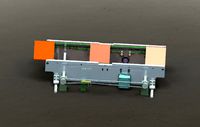
Belt conveyor belt
...t conveyor belt for download as 3ds, ige, obj, stl, and sldas on turbosquid: 3d models for games, architecture, videos. (1226546)
3d_export
$6
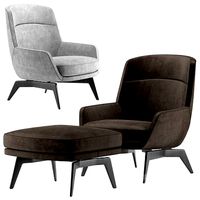
belt
...d then comes off and fastens at the front of the seat. version: 2015 units: millimetres x-form: yes polys: 120 950 verts: 163 944
3d_export
$7
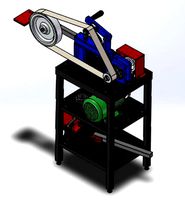
belt grinder
...belt grinder
3dexport
belt grinder
3d_export
$5
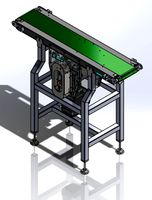
Belt conveyor
...belt conveyor
3dexport
belt conveyor
3ddd
$1

column belt
...column belt
3ddd
колонна
column belt
turbosquid
$5
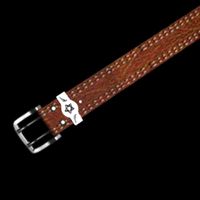
Belt
... available on turbo squid, the world's leading provider of digital 3d models for visualization, films, television, and games.
3d_ocean
$5
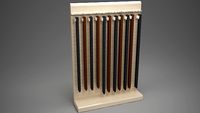
Leather Belt
...ather belt is created in 3dsmax 2011 and rendered with vray 1.5 and it has all the texture included with the multiple obj format.
3d_ocean
$5
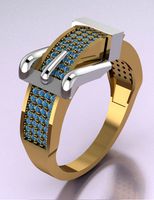
Belt Ring
...belt ring
3docean
belt jewelry ring
belt ring 3d model. total weight 3.5 gram & 1.1 stone size. 3dm and obj file format.
design_connected
$11
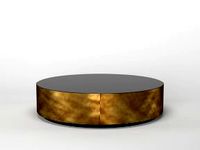
Belt Round
...belt round
designconnected
meridiani belt round computer generated 3d model. designed by parisio, andrea.
design_connected
$11

Belt Oval
...belt oval
designconnected
meridiani belt oval computer generated 3d model. designed by parisio, andrea.
Rack
archibase_planet
free

Rack
...ack
archibase planet
rack paper rack rack for paper
rack 6 office n060914 - 3d model (*.gsm+*.3ds) for interior 3d visualization.
archibase_planet
free
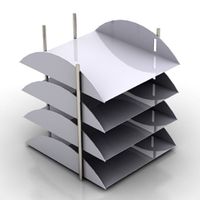
Rack
...ack
archibase planet
rack paper rack rack for paper
rack 3 office n060914 - 3d model (*.gsm+*.3ds) for interior 3d visualization.
archibase_planet
free
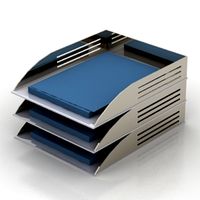
Rack
...ack
archibase planet
rack paper rack rack for paper
rack 5 office n060914 - 3d model (*.gsm+*.3ds) for interior 3d visualization.
archibase_planet
free
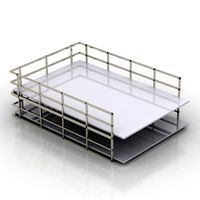
Rack
...ack
archibase planet
rack paper rack rack for paper
rack 7 office n060914 - 3d model (*.gsm+*.3ds) for interior 3d visualization.
archibase_planet
free

Rack
...for magazines rack for notebooks notebooks notebook
rack notebook n120614 - 3d model (*.gsm+*.3ds) for interior 3d visualization.
archibase_planet
free
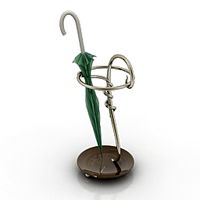
Rack
...rack
archibase planet
rack umbrella umbrella rack
rack n180811 - 3d model (*.3ds) for interior 3d visualization.
archibase_planet
free
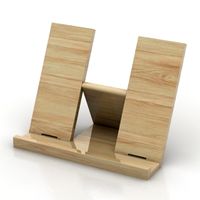
Rack
...rack
archibase planet
rack book rack stand
rack - 3d model (*.gsm+*.3ds) for interior 3d visualization.
archibase_planet
free

Rack
...rack
archibase planet
rack rack for glasses
rack 1 - 3d model (*.gsm+*.3ds) for interior 3d visualization.
archibase_planet
free
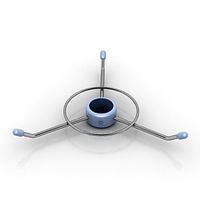
Rack
...rack
archibase planet
rack rack for glasses
rack 2 - 3d model (*.gsm+*.3ds) for interior 3d visualization.
3d_export
free
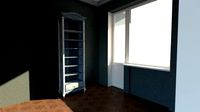
rack
...rack
3dexport
rack
Power
turbosquid
$100
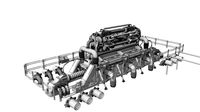
power
...ower
turbosquid
royalty free 3d model power for download as on turbosquid: 3d models for games, architecture, videos. (1421990)
3d_export
$5

Power
...power
3dexport
3d_export
$5

power outlets
...power outlets
3dexport
power outlets
3ddd
$1
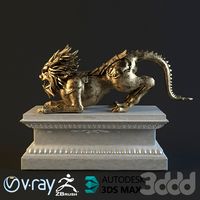
lion power
...lion power
3ddd
лев , статуя
lion power gold sculpture
3ddd
$1
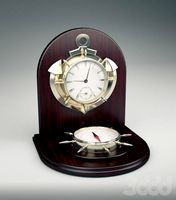
Sea Power
...
компас , море , часы
часы с компасом sea power
3ddd
free

Meridiani / Power
...power
3ddd
meridiani , круглый
стол power производитель meridiani, диаметр 120,высота 67
3d_export
$5

Power Surge
...power surge
3dexport
the power surge is a all mesh carnival ride to lower in game part count and lag
turbosquid
$8
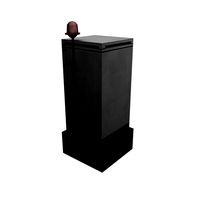
Airport Ground Power Unit (AXA Power )
... available on turbo squid, the world's leading provider of digital 3d models for visualization, films, television, and games.
turbosquid
$50

Power Houser
...rbosquid
royalty free 3d model power houser for download as on turbosquid: 3d models for games, architecture, videos. (1333800)
3d_export
$5

power outlet
...power outlet
3dexport
power outlet<br>format file maya 2018, 3d max 2017, obj, fbx
Attachment
turbosquid
$20

M4A1 + Attachements
... available on turbo squid, the world's leading provider of digital 3d models for visualization, films, television, and games.
turbosquid
$19

Attached House
... available on turbo squid, the world's leading provider of digital 3d models for visualization, films, television, and games.
turbosquid
$15

Attache case
... available on turbo squid, the world's leading provider of digital 3d models for visualization, films, television, and games.
cg_studio
$75

Attached House3d model
...d model
cgstudio
.3ds .fbx .max .obj - attached house 3d model, royalty free license available, instant download after purchase.
turbosquid
$2

M416 AR with attachments
... model m416 ar with attachments for download as blend and fbx on turbosquid: 3d models for games, architecture, videos. (1614294)
turbosquid
$10

M16A2 with M203 Attachment
... available on turbo squid, the world's leading provider of digital 3d models for visualization, films, television, and games.
turbosquid
$3

Modern 1911 with Attachments
... available on turbo squid, the world's leading provider of digital 3d models for visualization, films, television, and games.
turbosquid
$3

bench attached to greenery
... available on turbo squid, the world's leading provider of digital 3d models for visualization, films, television, and games.
3d_export
$8

Mercedes Sprinter sun visor attachment
...mercedes sprinter sun visor attachment
3dexport
mercedes sprinter sun visor attachment
turbosquid
$14

Residential building with attached shop
...l residential building with attached shop for download as max on turbosquid: 3d models for games, architecture, videos. (1482935)
